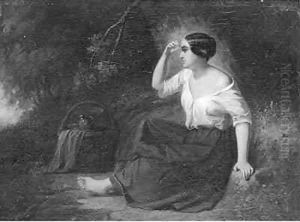Jan Jacob Matthijs Damschreuder Paintings
Jan Jacob Matthijs Damschreuder was a Dutch artist born in the mid-19th century, a period characterized by significant transformations in the European art scene. Born in 1825 in the Netherlands, Damschreuder lived through an era where the Romantic movement was giving way to Realism and then to the early stages of Impressionism. Despite these changing artistic currents, Damschreuder developed his unique style, often focusing on landscape and maritime subjects, which were popular in Dutch art of the time.
Damschreuder's works are characterized by their meticulous attention to detail and a profound appreciation for the natural beauty of the Dutch landscape. His maritime scenes, in particular, capture the dynamic and often tumultuous relationship between the sea and Dutch society. These works not only reflect the technical skills of Damschreuder but also his ability to evoke emotion and narrative through his depiction of the natural world.
Throughout his career, Damschreuder exhibited his works in various art shows and was part of the broader network of Dutch artists who contributed to the country's rich art historical tradition. Despite the prevalence of more dominant art movements of the 19th century, Damschreuder managed to carve out a niche for himself, ensuring his works were appreciated by both his contemporaries and art collectors.
Damschreuder's legacy is a testament to the enduring appeal of landscape and maritime art in the Dutch painting tradition. His dedication to capturing the essence of the Netherlands' natural and maritime landscapes has allowed his work to remain relevant, providing insight into the 19th-century Dutch relationship with nature and the sea. Jan Jacob Matthijs Damschreuder passed away in 1905, leaving behind a body of work that continues to be studied and appreciated for its contribution to the Dutch art historical canon.

